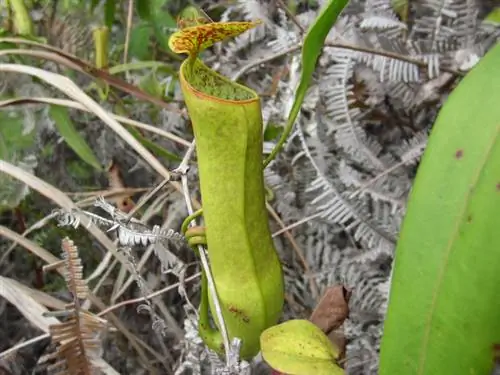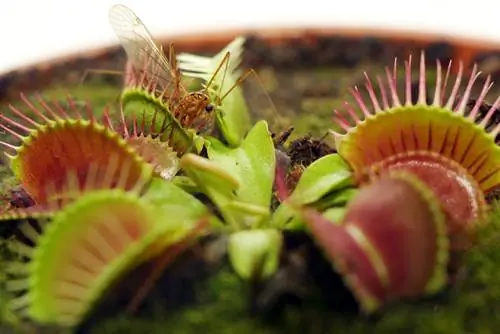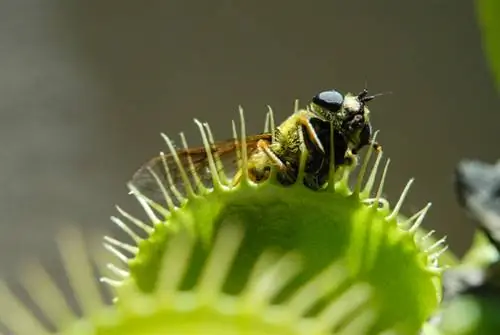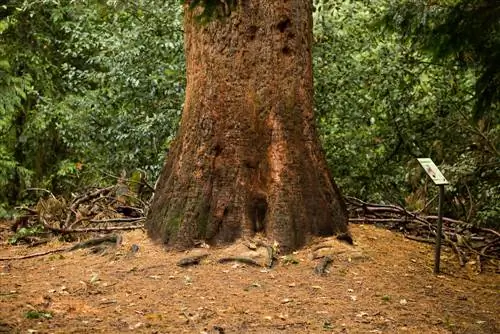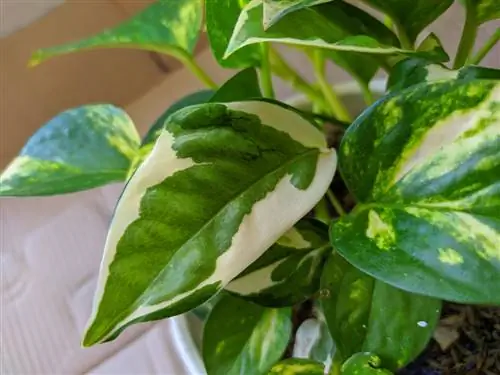- Author admin [email protected].
- Public 2023-12-16 16:46.
- Last modified 2025-06-01 06:02.
Most species of carnivorous plants remain small, especially when grown indoors. However, there are also a few varieties that can reach considerable sizes. However, no one needs to be afraid of these interesting carnivores.

Which carnivorous plants grow particularly large?
Large carnivorous plants such as Heliamphora tatei (swamp pitcher), Nepenthes (pitcher plants), Sarracenia flava (pitcher plant) and Drosera regia (sundew) can reach impressive sizes in nature, but usually remain smaller indoors and pose no danger people.
Carnivorous plants are getting bigger in the wild
Carnivorous plants that can grow particularly large when grown in a favorable location include:
- “Heliamphora tatei” - swamp pitcher
- “Nepenthes” - pitcher plants
- “Sarracenia flava” - pitcher plant
- “Drosera regia” - sundew
The swamp pitcher, which is at home in the rainforest, can reach four meters. Pitcher plants are climbing plants that grow up to ten meters high around trees. They sometimes form jugs with a capacity of three liters.
The pitcher plant can grow up to one meter high. The largest sundew species remains low, but produces leaves up to 40 centimeters long.
Large carnivorous plants for growing indoors
Carnivores generally don't grow that high indoors. You need a location that is very bright and warm. In addition, the humidity must be at least 50 percent. In our latitudes, this can only be achieved in terrariums, under glass or in special plant locations.
The large carnivorous plant best suited for growing indoors is the pitcher plant. The prerequisite for strong growth is that it has enough space to spread and the location is ideal. Then, with a bit of luck, it will develop pitchers that grow up to 15 centimeters high.
Take care of pitcher plants (Nepenthes) properly
For a pitcher plant to develop the largest possible pitchers, various conditions must be met:
- bright location
- Temperatures not just 25 degrees
- Humidity over 60 percent
- do not fertilize
- if possible, don’t feed it
- repotting in spring
- keep it just a little cooler in winter
To increase the humidity, bowls of water can be placed. Regular spraying with water also helps.
Like all carnivorous plants, pitcher plants should never be watered with hard water.
Tip
Even though the trapping devices of some carnivorous plants can grow impressively large, the gardener need not fear. Carnivores in the house only target small prey such as insects.

